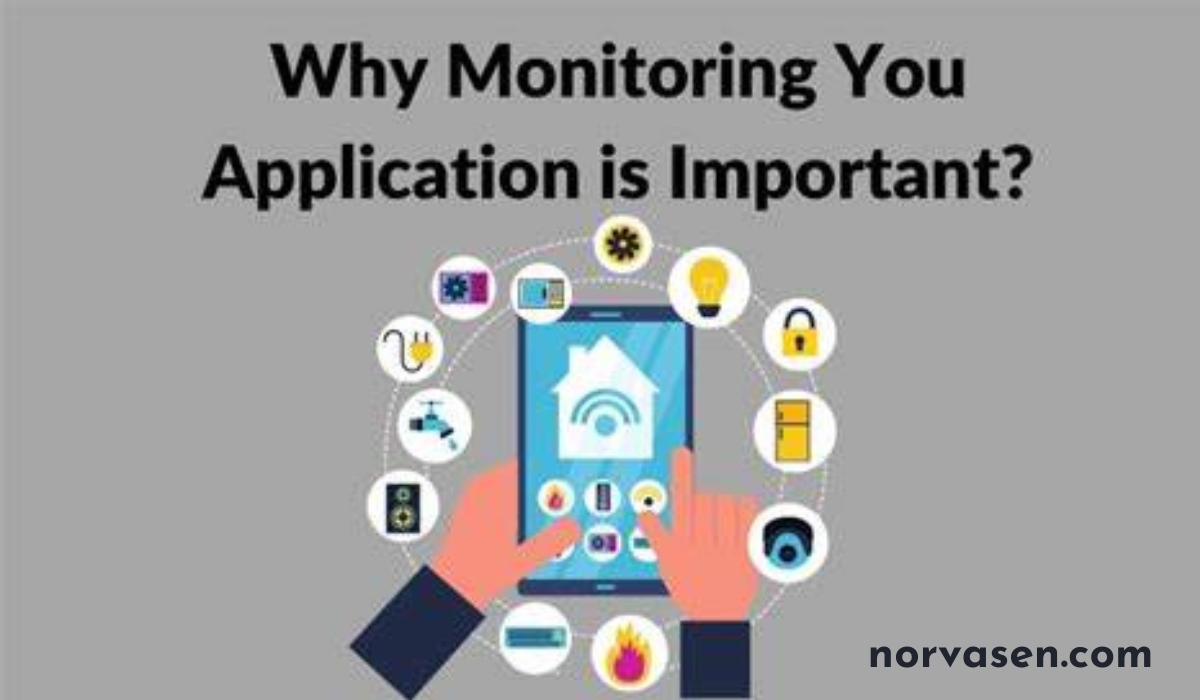How-To Guides
Why Monitoring Your Application is Important

In the fast-paced world of software development, ensuring that applications perform optimally, remain available, and deliver an exceptional user experience is paramount. For developers, application performance monitoring (APM) is an essential practice that enables them to achieve these goals. But what exactly is APM, and why is it so crucial? This comprehensive guide will delve into the importance of monitoring your application, the core components and processes of APM, and the future trends that will shape its evolution.
Introduction to APM
Definition
Application Performance Monitoring (APM) is the practice of monitoring and managing the performance and availability of software applications. It involves collecting and analyzing various performance metrics to ensure applications run smoothly and efficiently. At its core, APM aims to detect, diagnose, and resolve performance issues to maintain optimal application functionality.
Importance
APM is vital for several reasons:
- Ensures Optimal Performance: By continuously monitoring applications, developers can identify and resolve performance bottlenecks, ensuring the application runs efficiently.
- Enhances User Experience: A well-performing application provides a seamless experience for users, reducing frustration and increasing satisfaction.
- Operational Efficiency: Monitoring allows for the proactive management of resources, ensuring that applications remain available and responsive.
Core Components of APM
Metrics Collection
Collecting key performance metrics is the foundation of APM. These metrics include:
- Response Time: The time taken for an application to respond to user requests.
- Throughput: The number of transactions processed by the application in a given time period.
- Error Rates: The frequency of errors occurring within the application.
By monitoring these metrics, developers can identify performance bottlenecks and potential issues.
Instrumentation
Instrumentation involves adding monitoring code or agents to applications to collect performance data. This can be done manually, by inserting specific monitoring code, or automatically using tools like OpenTelemetry, Elastic, or IBM’s APM solutions.
Tracing and Debugging
Detailed tracing and debugging involve tracking the flow of transactions within an application to identify and fix issues at the code level. This includes:
- Transaction Profiling: Analyzing transactions to understand their performance characteristics.
- Code-Level Tracing: Identifying performance issues within the code itself, allowing for precise debugging and optimization.
Types of Monitoring in APM
Real User Monitoring (RUM)
Real User Monitoring (RUM) collects data on actual user interactions with the application, measuring performance from the end-user perspective. This type of monitoring helps developers understand how real users experience the application and identify areas for improvement.
Synthetic Monitoring
Synthetic monitoring system (SMS) uses artificial transactions to simulate user behavior. By running these simulations, developers can identify potential performance issues before they impact real users. OutSystems and similar platforms provide tools for effective synthetic monitoring.
Infrastructure Monitoring
Infrastructure monitoring focuses on the underlying infrastructure that supports the application, such as servers and networks. Monitoring these components helps detect issues that could affect application performance. OutSystems and other platforms offer robust infrastructure monitoring solutions.
APM Processes
Data Analysis
Aggregating and analyzing performance data is a critical APM process. By examining the collected data, developers can detect potential problems and identify trends that may impact application performance.
Alerting
Setting up alerts to notify stakeholders of performance deviations is essential for proactive issue management. Tools like Splunk and IBM’s APM solutions provide robust alerting mechanisms to ensure timely notifications.
Reporting
Providing detailed reports to stakeholders facilitates informed decision-making. Reports should include key performance metrics, identified issues, and recommended actions. Regular reporting helps maintain transparency and track progress over time.
Key APM Metrics
Response Time
Response time measures how long it takes for an application to respond to user requests. High response times can indicate performance bottlenecks that need to be addressed.
Error Rate
The error rate measures the frequency of errors occurring within the application. A high error rate can signal underlying issues that require immediate attention.
Throughput
Throughput measures the number of transactions processed by the application in a given time period. Monitoring throughput helps ensure the application can handle the expected load.
Server Health
Server health metrics include CPU usage, memory demands, and other server-related metrics. Monitoring these metrics helps ensure the underlying infrastructure is performing optimally.
Apdex Score
The Apdex (Application Performance Index) score is a standardized measure of user satisfaction with application performance. It provides a clear indication of how well the application meets user expectations.
Benefits of APM
Improved Stability and Uptime
APM enables proactive identification and resolution of issues before they impact users. This leads to improved application stability and uptime, ensuring that the application remains available and reliable.
Enhanced User Experience
By ensuring applications run smoothly, APM enhances the user experience. Users are more likely to be satisfied with an application that performs well and is free of errors.
Increased Productivity
APM streamlines troubleshooting processes, reducing the mean time to recovery (MTTR) when issues arise. This allows developers to focus on more strategic tasks, increasing overall productivity.
Challenges in APM
Complexity of Modern Applications
Modern applications are often distributed and cloud-native, making them complex to monitor. Effective APM solutions must be able to handle this complexity and provide comprehensive monitoring across all components.
Data Overload
Managing and analyzing the massive amounts of data generated by monitoring can be challenging. Developers must be able to filter out irrelevant data and focus on the most critical performance issues.
Integration
Ensuring APM tools integrate well with existing systems and workflows is essential for seamless monitoring. Developers must choose APM solutions that are compatible with their current infrastructure.
Future of APM
Observability
The future of APM extends beyond traditional monitoring to encompass observability. Observability involves collecting and analyzing data in real-time to gain deeper insights into application performance. This allows for more proactive issue detection and resolution.
AI and AIOps
Artificial Intelligence (AI) and AIOps (AI for IT Operations) are set to revolutionize APM. By utilizing AI, developers can predict, detect, and resolve performance issues autonomously, leading to self-healing applications. Elastic and IBM are examples of companies that are pioneering AI-driven APM solutions.
YOU MAY ALSO LIKE
Maximizing Server Efficiency: Monitoring, Optimization, and Caching Strategies
Conclusion
Monitoring your application is not just important; it’s essential for ensuring optimal performance, enhancing user experience, and maintaining operational efficiency. Application Performance Monitoring (APM) provides developers with the tools and insights needed to achieve these goals. By understanding the core components and processes of APM, developers can effectively monitor and manage their applications, ensuring they meet user expectations and remain competitive in the market.
The future of APM is bright, with advancements in observability and AI set to provide even deeper insights and more proactive issue resolution. As modern applications continue to evolve, so too must our approach to monitoring them. By staying ahead of the curve and leveraging the latest APM technologies, developers can ensure their applications are always performing at their best.
Remember, effective APM is not just about detecting and resolving issues; it’s about continuously improving application performance and delivering the best possible experience for users. So start monitoring your applications today and unlock the full potential of your software.
If you’re looking to get started with APM, consider tools like Jasper, which offer comprehensive monitoring solutions tailored to your needs. Sign up for Jasper for free and explore how effective monitoring can transform your application performance.
By embracing APM, you’ll not only improve the reliability and efficiency of your applications but also gain a competitive edge in the ever-evolving software landscape.
Frequently Asked Questions (FAQs)
1. What is Application Performance Monitoring (APM)?
Application Performance Monitoring (APM) is a comprehensive solution that monitors the performance and availability of software applications to ensure they run smoothly and efficiently.
2. Why is APM important for modern applications?
APM is crucial for detecting and resolving performance issues quickly, ensuring high availability, optimizing user experience, and maintaining operational efficiency.
3. How does APM improve user experience?
APM improves user experience by identifying and fixing performance bottlenecks and errors, leading to faster response times and more reliable applications.
4. What are key APM metrics to monitor?
Key APM metrics include response time, error rate, throughput, server health, and Apdex score, which provide insights into different aspects of application performance.
5. How is AI revolutionizing APM?
AI enhances APM by enabling predictive analytics, autonomous issue detection, and resolution, leading to self-healing applications and more proactive performance management.
How-To Guides
The Dangers of Allowing Minors to Operate ATVs

All-terrain vehicles (ATVs) offer an exhilarating outdoor experience, but they also come with significant risks, especially when operated by minors. Despite the appeal of ATVs to young thrill-seekers, the dangers associated with allowing minors to operate these vehicles cannot be overstated. This article delves into the risks, legal implications, and the role of parental responsibility in preventing ATV-related accidents involving minors.
Minors often lack the physical and cognitive maturity required to safely handle ATVs. Understanding these risks is crucial for parents and guardians to make informed decisions about ATV use. Consulting with a top rated injury law firm can provide valuable insights into the legal ramifications of ATV accidents involving minors.
The Physical and Cognitive Challenges
Operating an ATV requires significant physical strength and coordination, which many minors need to possess. The vehicles are often heavy and powerful, demanding precise control to navigate various terrains safely. Young riders may struggle with the physical demands, increasing the likelihood of losing control and causing accidents.
Cognitively, minors are still developing the ability to make quick, sound judgments, especially in high-pressure situations. This developmental stage can lead to poor decision-making on ATVs, such as underestimating speed or failing to anticipate obstacles. These cognitive limitations significantly elevate the risk of accidents and injuries.
Common Injuries Among Minor ATV Operators
ATV accidents can result in severe injuries, particularly among minors. Here are the common types of injuries and their implications:
- Fractures: Broken bones, especially in the arms, legs, and collarbone, are frequent outcomes of ATV accidents. These injuries often require long recovery periods and sometimes surgery.
- Head Trauma: Head injuries, including concussions and traumatic brain injuries, are prevalent, particularly when minors do not wear helmets. These injuries can have lasting cognitive and physical effects.
- Spinal Cord Injuries: ATV crashes can result in spinal cord damage, leading to partial or complete paralysis. Such injuries necessitate extensive medical treatment and rehabilitation.
- Internal Organ Damage: The impact of ATV accidents can cause serious internal injuries, such as liver lacerations, kidney damage, or internal bleeding. These injuries are life-threatening and require immediate medical attention.
- Lack of Protective Gear: The absence of helmets and padded clothing often exacerbates injuries. Minors without proper protection are more vulnerable to severe harm and long-term physical and psychological effects from accidents.
Legal Implications of Minor-Operated ATV Accidents
Allowing minors to operate ATVs can have serious legal consequences. In many jurisdictions, there are specific laws regulating the age at which individuals can legally operate ATVs. Violating these laws can result in fines, legal action, and liability for any injuries sustained or caused by the minor.
Parents and guardians may be held legally responsible for negligence if they allow their underage children to operate ATVs. In the event of an accident, victims can seek compensation for medical expenses, pain and suffering, and other damages. Consulting with a top-rated injury law firm can help families understand their legal rights and obligations.
Parental Responsibility and Supervision
Parental supervision is crucial in preventing ATV accidents involving minors. Parents should ensure that their children are adequately trained and equipped with the necessary safety gear before allowing them to operate an ATV. Enforcing strict rules about where and how the ATV can be used is also essential to minimize risks.
Parents should also consider enrolling their children in ATV safety courses, which teach essential skills and safety protocols. These courses can significantly reduce the likelihood of accidents by educating young riders on how to handle ATVs responsibly.
Safety Measures and Recommendations
To protect minors from the dangers of operating ATVs, several safety measures should be implemented. Firstly, always ensure that the minor wears appropriate safety gear, including a helmet, gloves, and protective clothing. These can mitigate the severity of injuries in case of an accident.
Secondly, ATV use should be limited to appropriate terrains and conditions. Avoid allowing minors to ride on steep, uneven, or overly challenging terrains. Lastly, the ATV must be regularly maintained and inspected to ensure it is in safe operating condition. Proper maintenance can prevent mechanical failures that might lead to accidents.
The Role of Legislation and Community Awareness
Legislation plays a vital role in regulating ATV use among minors. Stricter laws and enforcement can help reduce the incidence of accidents. Community awareness programs can also educate parents and children about the risks associated with ATVs and the importance of safety measures.
Communities can advocate for safer ATV practices through local initiatives, such as organizing safety workshops and promoting helmet use. By fostering a culture of safety and responsibility, communities can help protect minors from the inherent dangers of ATV operation.
Seeking Legal Support After an ATV Accident
In the unfortunate event of an ATV accident involving a minor, seeking legal support is crucial. A top-rated injury law firm can provide the necessary legal guidance and representation to navigate the complexities of personal injury claims. Legal professionals can help determine liability, gather evidence, and secure fair compensation for medical expenses, rehabilitation, and other damages.
Legal support can also provide families with the resources needed to cope with the aftermath of an accident, ensuring that their rights are protected and that they receive the necessary support for recovery.
Long-Term Consequences and Rehabilitation
The long-term consequences of ATV accidents involving minors can be severe and life-altering. Beyond the immediate physical injuries, many young riders face prolonged recovery periods, requiring extensive medical treatment and rehabilitation. This can include physical therapy to regain mobility, surgery to repair damaged bones or organs, and ongoing medical check-ups to monitor recovery progress. The physical and emotional toll on the injured child and their family can be overwhelming, often leading to significant lifestyle changes and adjustments.
Rehabilitation is a crucial part of the recovery process, aimed at helping the injured minor regain as much function and independence as possible. It may involve various therapies, including physical, occupational, and psychological support, to address the comprehensive needs of the injured child. The costs associated with long-term care and rehabilitation can be substantial, making it essential for families to seek adequate compensation through legal channels.
How-To Guides
How Pre-licensing Courses Can Prevent Any Tragic Accident on the Road

Driving is a critical life skill, but it also comes with significant responsibilities. Every year, thousands of lives are lost in traffic accidents, many of which could have been prevented with better driver education. Pre-licensing courses play a crucial role in preparing new drivers to be safe, responsible, and confident behind the wheel.
In this guide, we will explore how these courses can help prevent a tragic accident on the road.
The Benefits of Pre-Licensing Courses
While some people may believe that driving is an intuitive skill, the reality is that it requires a comprehensive understanding of various factors. Pre-licensing courses ensure that new drivers are well-prepared to handle different driving situations, thereby reducing the risk of accidents.
One of the primary benefits of pre-licensing courses is that they provide a thorough understanding of traffic laws. Knowing the rules of the road is essential for preventing accidents.
These courses teach drivers about speed limits, right-of-way rules, and the importance of following traffic signals. Here’s more information about a 5 hour course that helps drivers make informed decisions and avoid dangerous situations.
Steps to Take a Pre-Licensing Course
Follow these steps to complete a pre-licensing course successfully.
1. Research and Choose a Course
The first step in taking a pre-licensing course is to research available options. Look for courses that are accredited and have positive reviews from past students.
Consider factors such as the course curriculum, duration, and cost. Make sure the course meets the requirements for obtaining a driver’s license in your state or country.
2. Enroll in the Course
Once you’ve chosen a course, the next step is to enroll. This often involves filling out an application form and paying a fee. Some courses may be available online, while others require in-person attendance. Choose the format that best fits your learning style and schedule.
3. Attend Classes and Complete Assignments
Pay close attention to the material covered, as it will be essential for passing your driving test. Take notes and ask questions if you need clarification on any topics.
4. Take the Final Exam
Most pre-licensing courses conclude with a final exam. It tests your knowledge of traffic laws, defensive driving techniques, and other key topics. Passing this exam is usually a requirement for obtaining a certificate of completion, which you’ll need when applying for your driver’s license.
5. Get Your Certificate of Completion
Upon successfully completing the course and passing the final exam, you’ll receive a certificate of completion. This document is proof that you’ve fulfilled the educational requirements for obtaining a driver’s license. Keep it in a safe place, as you’ll need to present it when you go to apply for your license.
The Crucial Impact of Pre-Licensing Courses to Avoid a Tragic Accident
Pre-licensing courses are an invaluable resource for anyone looking to become a safe and responsible driver. By providing comprehensive knowledge of traffic laws and offering practical driving experience, these courses play a crucial role in preventing a tragic accident on the road.
If you’re preparing to get your driver’s license, consider enrolling in a pre-licensing course to ensure you’re fully equipped to handle the challenges of driving.
For similar topics, visit our blog!
How-To Guides
The Importance of Proper HVAC Recovery: Tips for Avoiding Costly Repairs

Have you ever wondered why your HVAC system suddenly stops working?
Proper HVAC recovery might be the answer. When your HVAC unit isn’t maintained well, it can lead to breakdowns and expensive repairs. By understanding HVAC recovery, you can keep your system running smoothly.
In this guide, we will share simple tips to help you avoid these costly problems. By taking care of your HVAC system, you can save money and enjoy a comfortable home all year round.
Regularly Change Air Filters
Changing air filters regularly is crucial for an energy-efficient HVAC system. Dirty filters block airflow, making your system work harder and use more energy. This extra strain can lead to breakdowns and costly repairs.
To avoid these issues, check your air filters every month. Replace them at least every three months, or more often if you have pets or allergies. Clean filters not only extend the life of your HVAC unit but also keep your indoor air quality high.
Schedule Annual Professional Maintenance
Annual professional maintenance is key to keeping your HVAC system in top shape. A trained technician can spot problems before they become big issues. They will check parts, clean coils, and make sure everything runs smoothly.
Investing in a yearly tune-up helps to avoid breakdowns and saves money on repairs. Plus, it extends the life of your system.
Using the best recovery machine ensures efficient and effective service. Remember, taking care of your HVAC system yearly keeps your home comfortable and energy bills low.
Keep Outdoor Units Clean and Clear
Good HVAC maintenance includes keeping outdoor units clean. Remove leaves, dirt, and debris from around the unit. These things can block airflow and make the system work harder.
Trim plants and bushes at least two feet away. This helps air move freely. Check the area every month and especially after storms.
Wash the unit with a garden hose if it gets dirty. Keeping outdoor units clean improves efficiency and can prevent costly repairs. Simple cleaning goes a long way in HVAC maintenance.
Use a Programmable Thermostat
Using a programmable thermostat can save energy and money. Set it to lower the temperature when no one is home and raise it before you return. This simple adjustment can reduce your energy bills without sacrificing comfort.
During the summer, set the thermostat higher when you’re away, and lower it in the winter. Make sure to read the manual and program it correctly. A programmable thermostat takes the guesswork out of adjusting temperatures and helps your HVAC system run efficiently throughout the year.
Seal and Insulate Ductwork
Sealing and insulating ductwork keeps your HVAC system efficient. Leaky ducts can let warm or cool air escape, making your system work harder and using more energy. Inspect your ducts for gaps and seal them with duct tape or mastic sealant.
Add insulation around ducts in unheated areas like attics or basements. This step helps keep the air temperature steady and saves money on energy bills. Properly sealed and insulated ducts ensure your home stays comfortable and your HVAC system runs smoothly all year.
Follow These Tips for Effective HVAC Recovery
HVAC recovery is crucial for maintaining a reliable and efficient system. By changing air filters, scheduling yearly maintenance, keeping outdoor units clean, using a programmable thermostat, and sealing ductwork, you can avoid costly repairs and keep your home comfortable.
Regular care and attention to your HVAC system ensure it runs smoothly and lasts longer. Follow these simple steps for effective HVAC recovery and enjoy year-round comfort.
Please take a look at our blog for more educational articles.
-

 Tech5 months ago
Tech5 months agoExploring the Features of Innocams: The Future of Security
-

 Home Improvement3 months ago
Home Improvement3 months agoEco-Friendly Round Rug Options for Sustainable Living in NZ
-

 How-To Guides2 months ago
How-To Guides2 months agoComprehensive Guide to Cockwarming: Enhancing Intimacy and Connection
-

 Fashion3 months ago
Fashion3 months agoBlack Magic: The Elegance and Sophistication of Ultimate Homecoming Dresses in Black
-

 Apps and Games3 months ago
Apps and Games3 months agoDiscover Tickzoo: The Ultimate Platform for Video Content Lovers and Creators
-

 Business5 months ago
Business5 months agoUnlock Potential: Explore Pikruos Services
-

 Blog3 weeks ago
Blog3 weeks agoPossiblyethereal: Exploring the Ethereal Unveiling Abstract Ideas
-

 Entertainment4 months ago
Entertainment4 months agoDiving into the Audio-Visual Experience with AV Tub: Innovating Our World of Media
















